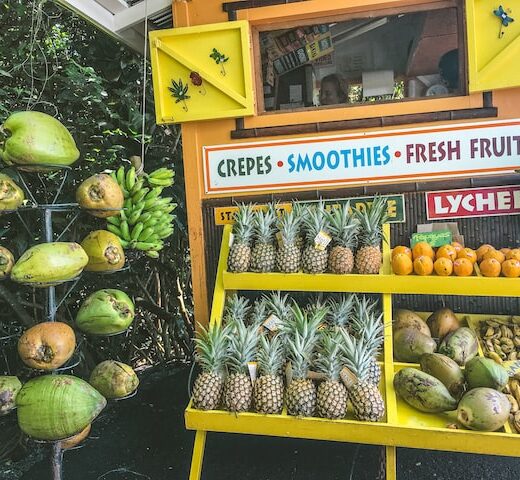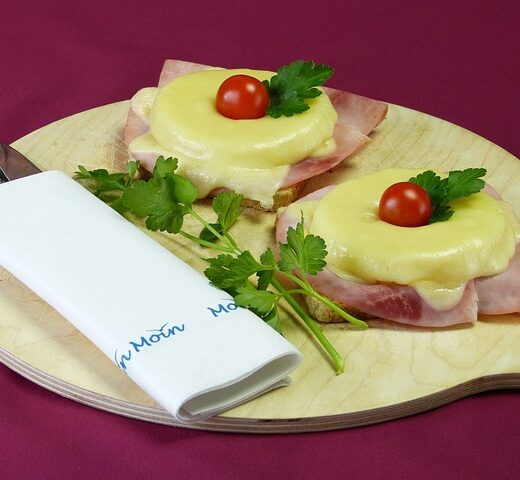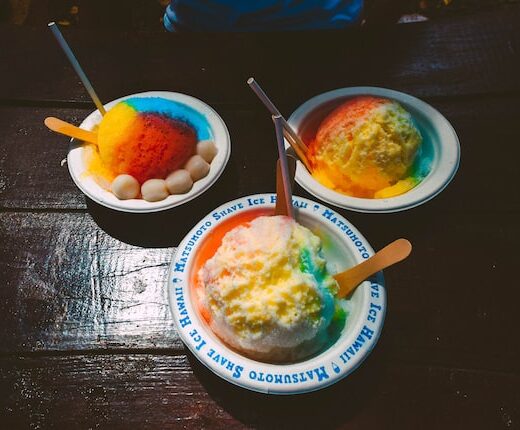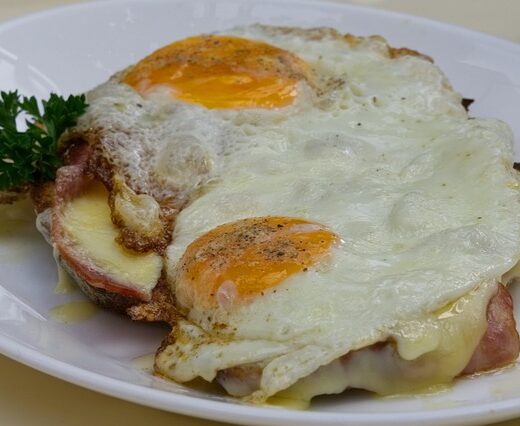Before we get into the sweets, make sure you check out Part 1 of this series. In this section let’s discuss the food’s history and culture.
This assortment of cuisine is prevalent throughout the islands and is what the locals eat daily. On their way to work, they pick up the ensaymada (Filipino butter-topped pastry) and bring the butter mochi (bite-sized sweet rice flour confection) to a potluck. The plate lunch weighs more than a toddler, as well as the bento boxes with room temperature fried chicken and Portuguese sausage from the lunch counter.

A third culinary component in Hawaii, after traditional Hawaiian cuisine and local food: a revolution known as “Hawaiian Regional Cuisine,” happened in the early 1990s. Influential chefs started a movement that substituted standard hotel meals with dishes made using locally produced ingredients, and it has only grown and spread since then. These are typically the establishments where tourists can enjoy food similar to that available in fine-dining restaurants at home (meat or fish, vegetable, single starch), but prepared with local products.
As the movement progressed, it brought attention to a small fraction of the food grown and served on the island, although this type of Hawaiian cuisine differs from the daily feed of most Hawaiians. It is built on the foundation of French or American fine dining, with Hawaiian-grown food serving as the backdrop.

It’s challenging to find good traditional Hawaiian food (most visitors only see it in the chafing pans of high-volume, low-quality commercial luaus). On the other hand, finding great fancypants Hawaiian regional cuisine is almost too simple, leaving guests wondering why they should bother leaving the resort or traveling across the island to experience the strange world of native food. In no particular sequence, the answers are poke, manapua, spam musubi, fish tacos, saimin, huli huli chicken, garlic shrimp, loco moco, malasadas, and shaved ice.

Malasadas
These sugary, no-hole doughnuts have stayed relatively faithful to the original, which arrived in Hawaii with Portuguese immigrants. Malasadas, like beignets and paczki, were formerly only offered on Fat Tuesday, but they’ve since become an everyday treat. The traditional malasada is a simple yeasted, deep-fried dough rolled in sugar that can be round or square but never has a hole in the middle.
The best malasadas, rich in eggs and butter, are both light and chewy when served warm, with a fluffy, springy interior and a crisp outer. Almost every institution specializing in malasadas provides cream- and fruit-filled variations, although those necessitate waiting until the malasada has cooled, which is inconvenient. Malasadas are worth stopping for at Punalu’u Bake Shop and Tex Drive-In on opposite ends of the Big Island. Punalu’u (the United States’ southernmost bakery) offers filled versions using tropical fruits from the island. At the same time, Tex (near the north end) manufactures the classic plain form in the less common square shape.

Shave Ice
Poorly manufactured shave ice is a sad sight, leaving the eater with vast swaths of unflavored ice. A genuinely exceptional shave ice (such as the one served at Ululani’s Hawaiian Shave Ice on Maui) takes significantly more skill and attention to detail than, for example, pouring syrup over crushed ice for a snow cone. The syrup should flow through the loosely braided ice with the proper stroking and patting techniques employed by the server to produce the dessert, keeping every bite evenly flavored. The discerning shave ice eater will ensure it is carefully made, choosing from syrup flavors ranging from local fruits like lilikoi to modern flavors like Thai tea.
While toppings are typically added to ice cream, shave ice goes above and beyond by giving both underneath and topping add-ons (such as ice cream and sweet red adzuki beans). Local favorites are the chewy sweet rice dumplings known as mochi, which have the exact opposite texture to the cold, hard ice, and the sour li hing mui powder (ground-up pickled plum skin), which contrasts as much with the sweet syrup as the mochi does with the ice.
I couldn’t stop myself from featuring one more savory dish.

Loco Moco
Have fun when you’re on vacation. Let the best part of a hamburger (the patties) collide with the best part of Thanksgiving (the gravy) and the best of the carb world (rice), all topped with the dish’s queen, the fried egg. When the yolk cracks, it flows, thickening and mixing all the flavors in the already slow-moving gravy.
The origins of the loco moco are unknown, although it first appeared in the late 1940s and is named after the Spanish word for lunatic. Strongly resembling a convertible style as a burger, it is not a burger, contrary to what Food Network Magazine first stated. Spam or Portuguese sausage (a garlicky, somewhat sweet spin on linguiça) is sometimes replaced or combined with the meat, and the gravy can be seasoned with chili, stew, or teriyaki sauce. Cafe 100 on the Big Island of Hawaii’s Hilo serves over 30 different loco moco varieties.

This was just a small sampling of all the cuisines available on the islands. Between the luaus and the beach specialties, you might need a belt extender on the aircraft when you return from your Hawaiian holiday, so add some surfing or hiking to your island excursions. Enjoy.

Leave a Reply